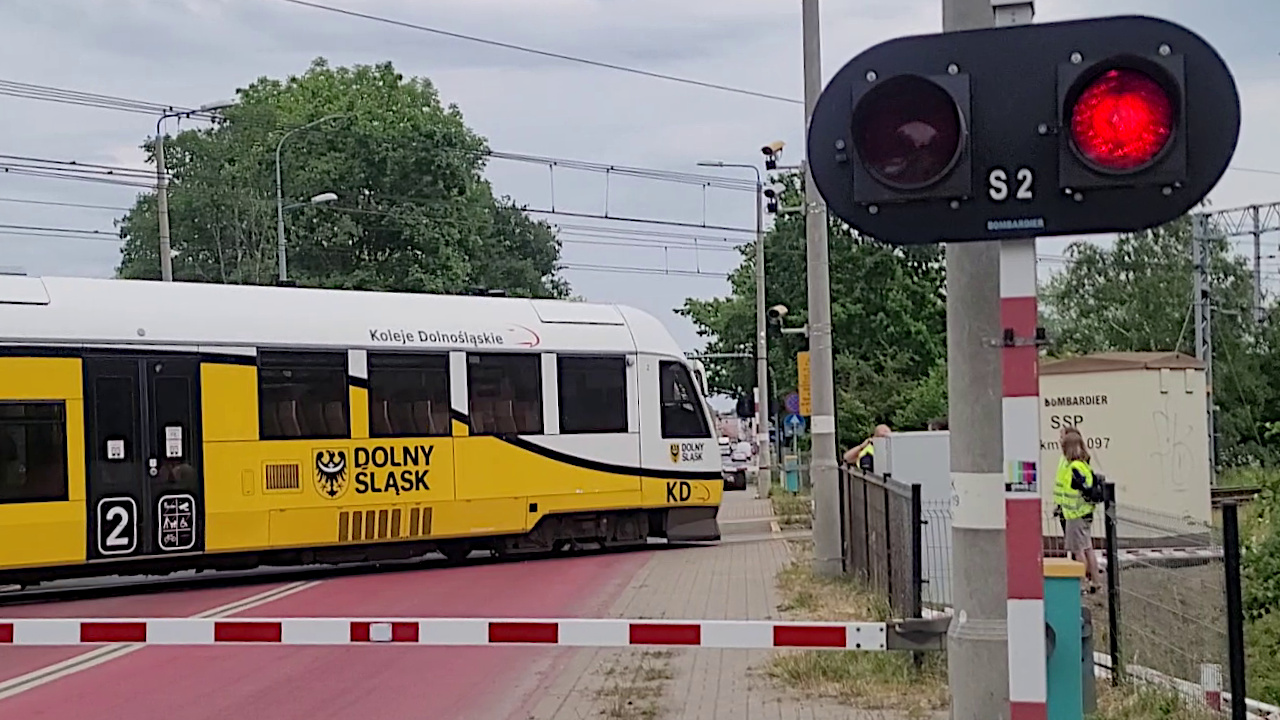

In early June 2023. The General Inspectorate of Road Transport launched Poland’s first automatic red light crossing control system, installed at a railroad crossing. The system was launched in Wroclaw’s Lesnica district, on national road No. 94, which crosses the AGC “Wroclaw-Legnica” international railroad line. The system registers all vehicles that do not stop in front of the crossing when the traffic signal gives a red signal. In addition, vehicles that perform an overtaking maneuver within the railroad crossing and just before it are also registered. Digital evidence of offenses, in the form of photos and videos, is immediately sent to CANARD headquarters in Warsaw.

The location of the installation is no accident. According to a report commissioned by GITD, which took into account information on traffic incidents downloaded from the police Accident and Collision Record System, from 2016-2018, the Lesnica railroad crossing is one of the most dangerous places in terms of traffic accidents. The location was ranked sixth out of 140 places in urgent need of safety improvement in Poland, and first among railroad crossings. This condition was also confirmed by the railroad operator PKP PLK, which recorded nearly 60 dangerous incidents per year at this crossing.
The system was installed by the Silesian company Lifor Sp. z o.o. under a contract with GITD for “Delivery and installation at rail-road intersections of 5 stationary recording devices used to reveal offenses involving drivers’ failure to obey traffic lights” (BDG.ZPB.072.3.2021). The system was developed and delivered by the Wroclaw-based company NeuroCar Sp. z o.o.
The implemented solution monitors each intersection inlet independently. Three cameras have been installed at the inlet. The first camera observes vehicles entering the crossing “from behind”, tracking their traffic trajectory and monitoring the status of traffic signals at the same time. The second camera, installed on the opposite side of the entrance, observes the front of the vehicle detecting the moment it crosses the stop line. This camera is also used to identify the vehicle by recognizing the license plate, country of origin, category, make and model version of the vehicle. A third camera is positioned to take a clear picture of the driver. The video stream from the cameras is sent to a recording device, which analyzes the data in real time and generates information about the offense. The recorded offense is encrypted and digitally signed, and then almost immediately, it is sent electronically to CANARD headquarters in Warsaw.
This device is not connected in any way to the road or rail infrastructure – only the data stream from the cameras is analyzed. The evidence provided is a series of photos and videos that clearly show the commission of an offense. The device also immediately performs vehicle identification (registration number, category, manufacturer, model) and connects such information to metadata describing the offense. Violations are also recorded for vehicles that entered the crossing before the barriers were fully raised. In addition, thanks to infrared illuminators, the device also works effectively at night.
The solution provided by NeuroCar uses the latest deep neural network technology and was fully developed in Poland. DNN models are used at various stages of video analysis, e.g. for vehicle detection and tracking, video analysis of the status of traffic signals, license plate detection and recognition, brand and model recognition, or performing various calibration processes. The real-time application of these techniques would be impossible without hardware support in the form of a dedicated Hailo-8™ neural computing coprocessor embedded in the recording device.